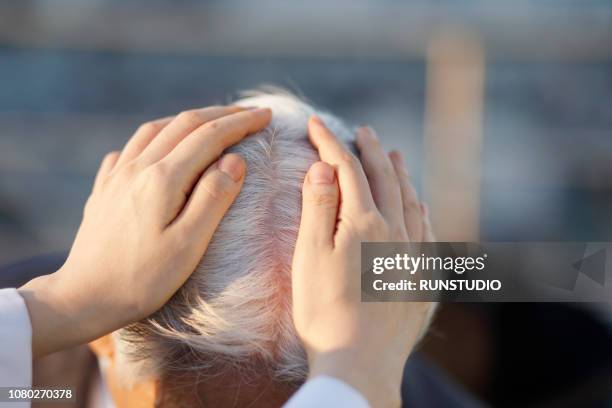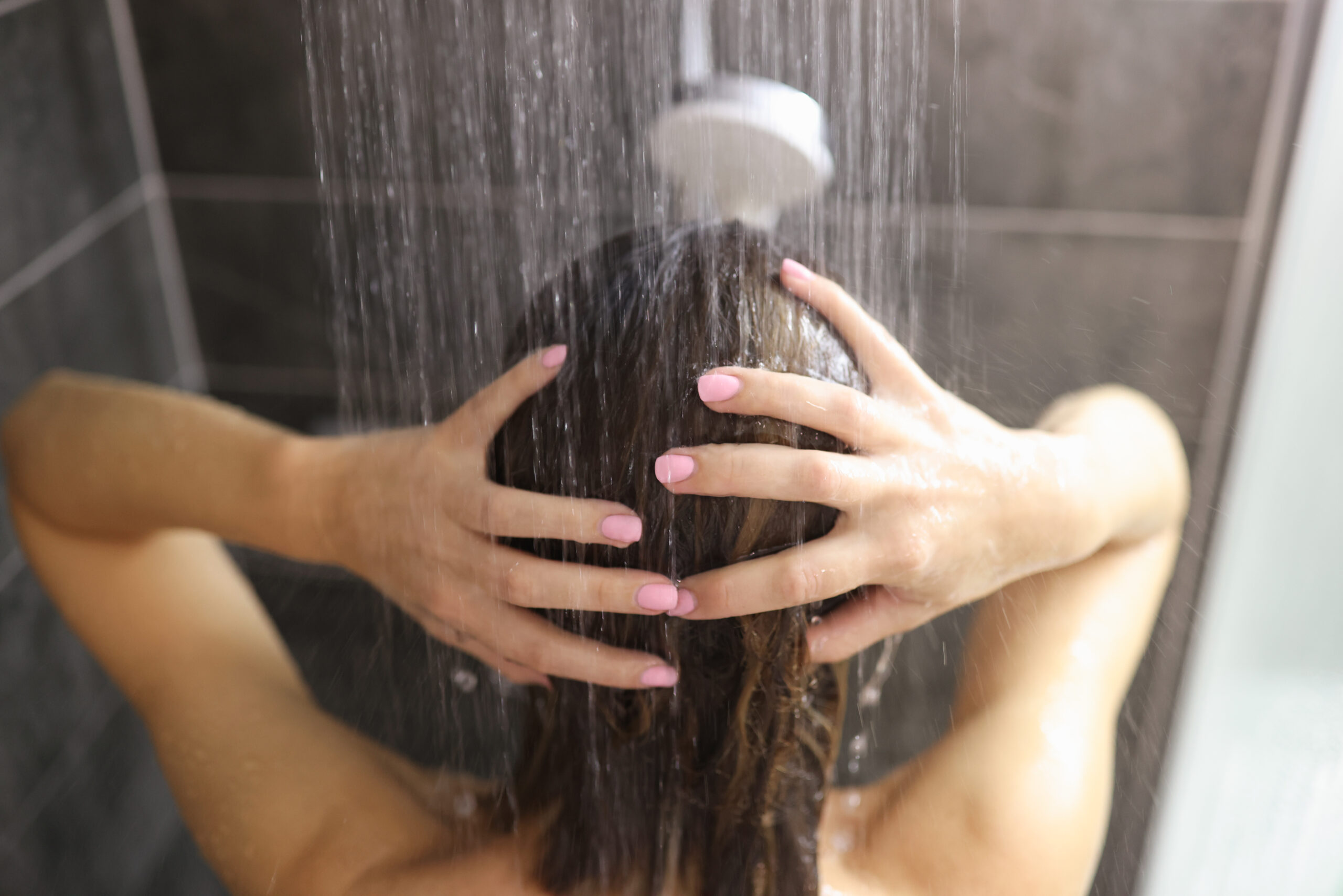10 Tips for a Healthy, Happy Scalp
Maintaining a healthy scalp is crucial for luscious, vibrant hair. A happy scalp translates to strong, shiny locks, and neglecting its well-being can lead to a variety of issues, from dandruff and dryness to hair loss and irritation. At hairy.cartlab.web.id, we understand the importance of a holistic approach to hair care, starting with the foundation: your scalp. This comprehensive guide will equip you with the knowledge and tools you need to achieve a healthy, happy scalp and, consequently, stunning hair. We’ll explore ten essential tips, backed by expert advice, to help you nurture your scalp and unlock its full potential. Understanding your scalp’s unique needs is the first step towards achieving your hair goals.
A healthy scalp is the foundation for healthy hair. Ignoring your scalp’s health can lead to various issues, affecting both the appearance and the overall health of your hair. From subtle dryness and itchiness to more serious problems like dandruff and hair loss, a neglected scalp can significantly impact your confidence and well-being. This article will provide practical, actionable steps to improve your scalp health and help you achieve the beautiful, strong hair you desire. Let’s delve into the essential tips that will transform your scalp care routine.
This guide aims to provide a complete overview of scalp health, combining expert advice with practical, easy-to-follow tips. We’ll explore everything from proper cleansing techniques and scalp massage to dietary considerations and the importance of addressing underlying medical conditions. By the end of this article, you’ll have a comprehensive understanding of how to nurture your scalp, leading to healthier, happier hair. Let’s begin our journey to a healthier, happier you!

1. Gentle Cleansing: The Foundation of Scalp Health

The first step towards a healthy scalp is gentle cleansing. Harsh shampoos containing sulfates can strip your scalp of its natural oils, leading to dryness, irritation, and even dandruff. Opt for sulfate-free, gentle shampoos specifically formulated for sensitive scalps. These shampoos will effectively clean your hair without disrupting the delicate balance of your scalp’s natural oils. Remember to massage the shampoo gently into your scalp using your fingertips, avoiding harsh scrubbing. Rinsing thoroughly is crucial to remove all traces of shampoo, preventing product buildup. Consider using a clarifying shampoo once a month to remove any accumulated product residue.
2. The Power of Scalp Massage: Stimulating Growth and Relaxation

Regular scalp massage is a powerful tool for promoting hair growth and relaxation. Gentle massage stimulates blood circulation, delivering essential nutrients to the hair follicles. This increased blood flow can strengthen hair follicles, potentially leading to thicker, healthier hair. You can perform a scalp massage yourself using your fingertips, applying gentle circular motions. Alternatively, you can use a scalp massager tool for a more intensive experience. Aim for a 5-10 minute massage several times a week to experience the full benefits. You’ll not only notice improvements in your hair’s health but also feel a sense of relaxation and stress relief.
3. Hydration, Inside and Out: Nourishing Your Scalp

Hydration is paramount for overall health, and your scalp is no exception. Drinking plenty of water throughout the day keeps your scalp hydrated, preventing dryness and itchiness. Furthermore, incorporating hydrating foods rich in vitamins and minerals into your diet can significantly improve scalp health. Foods like fruits, vegetables, and omega-3 fatty acids are crucial for maintaining a healthy scalp and promoting hair growth. A balanced diet contributes to overall well-being, reflecting positively on your hair and scalp. For additional styling tips to enhance your hair’s volume, check out our article on “Tips to Style Short Hair for Volume” at hairy.cartlab.web.id/tips-to-style-short-hair-for-volume.
4. Addressing Underlying Conditions: Seeking Professional Help

If you experience persistent scalp issues like excessive dandruff, redness, or inflammation, it’s crucial to seek professional help. Underlying medical conditions like psoriasis, seborrheic dermatitis, or fungal infections can manifest as scalp problems. A dermatologist can accurately diagnose the condition and recommend appropriate treatment. Early intervention is key to preventing long-term damage and ensuring effective management of the condition. Don’t hesitate to consult a healthcare professional if you suspect an underlying medical issue affecting your scalp health. Early diagnosis and treatment are crucial for maintaining a healthy scalp and preventing further complications.
5. Protecting Your Scalp from the Sun: UV Protection Matters

Just like your skin, your scalp is susceptible to sun damage. Prolonged sun exposure can dry out your scalp, leading to irritation and damage to hair follicles. Protecting your scalp from the sun is essential, especially during peak hours. Wearing a hat or using a UV-protective hair product can significantly reduce sun damage. Consider using a leave-in conditioner with UV protection to shield your scalp and hair from harmful UV rays. Remember that sun protection is a year-round commitment, even on cloudy days.
6. Choosing the Right Hair Products: Avoiding Irritants

The products you use on your hair significantly impact your scalp’s health. Avoid products containing harsh chemicals, fragrances, or irritants that can exacerbate existing scalp conditions or trigger new ones. Opt for products specifically designed for sensitive scalps, free from sulfates, parabens, and silicones. Always patch test new products on a small area of skin before applying them to your entire scalp to check for any allergic reactions. Reading product labels carefully and selecting products with natural ingredients can minimize the risk of irritation and promote a healthier scalp.
7. Maintaining a Healthy Diet: Fueling Hair Growth

A balanced diet rich in essential nutrients is crucial for healthy hair growth. Include foods rich in protein, vitamins (A, B, C, D, and E), minerals (iron, zinc, and selenium), and omega-3 fatty acids in your diet. These nutrients are vital for the production of keratin, a protein that forms the structure of your hair. Consider consulting a nutritionist or dietitian to create a personalized diet plan that addresses your specific nutritional needs and supports optimal scalp and hair health. A healthy diet will not only benefit your scalp but also improve your overall well-being. For inspiration on a trendy hair color, check out our guide on “Soft Pastel Hair Colors for a Dreamy Look” at hairy.cartlab.web.id/soft-pastel-hair-colors-for-a-dreamy-look.
8. Minimizing Stress: Its Impact on Scalp Health

Stress can significantly impact your scalp health, potentially contributing to hair loss and other scalp issues. Chronic stress can disrupt the hair growth cycle, leading to thinning hair and increased shedding. Practicing stress-reducing techniques like yoga, meditation, or deep breathing exercises can help manage stress levels and improve scalp health. Prioritizing self-care, getting enough sleep, and engaging in activities you enjoy can contribute to a healthier scalp and overall well-being. A relaxed mind and body contribute to a healthier scalp.
9. Regular Trims: Preventing Split Ends and Breakage

Regular trims are essential for maintaining healthy hair and preventing split ends and breakage. Split ends can travel up the hair shaft, causing further damage and weakening the hair. Getting regular trims removes split ends, preventing further damage and promoting healthier hair growth. Consult a hairstylist to determine the appropriate trimming frequency based on your hair type and growth rate. Regular trims are a simple yet effective way to maintain the health and integrity of your hair. To find a style that complements your face shape, explore our article on “The Best 10 Hairstyles for Oval Face Shapes” at hairy.cartlab.web.id/the-best-10-hairstyles-for-oval-face-shapes.
10. Using a Scalp Treatment: Targeted Care for Specific Needs

Scalp treatments offer targeted care for specific scalp concerns. These treatments can address dryness, dandruff, oiliness, and other scalp issues. Choose a treatment formulated to address your specific needs, whether it’s a hydrating mask, an anti-dandruff serum, or an oil-balancing tonic. Follow the product instructions carefully for optimal results. Incorporating scalp treatments into your hair care routine can provide additional support for a healthy, happy scalp. Always check with your dermatologist for recommendations on the best scalp treatment for your specific needs.
Conclusion:
Achieving a healthy, happy scalp requires a holistic approach encompassing gentle cleansing, regular scalp massage, proper hydration, and a healthy lifestyle. By following these 10 Tips for a Healthy, Happy Scalp, you can nurture your scalp, promoting strong, vibrant hair. Remember to address any underlying medical conditions, protect your scalp from the sun, and choose the right hair products to avoid irritation. For more information and guidance on achieving your hair goals, visit our dedicated page on 10 Tips for a Healthy, Happy Scalp. Remember, a healthy scalp is the key to beautiful, healthy hair.





Comments